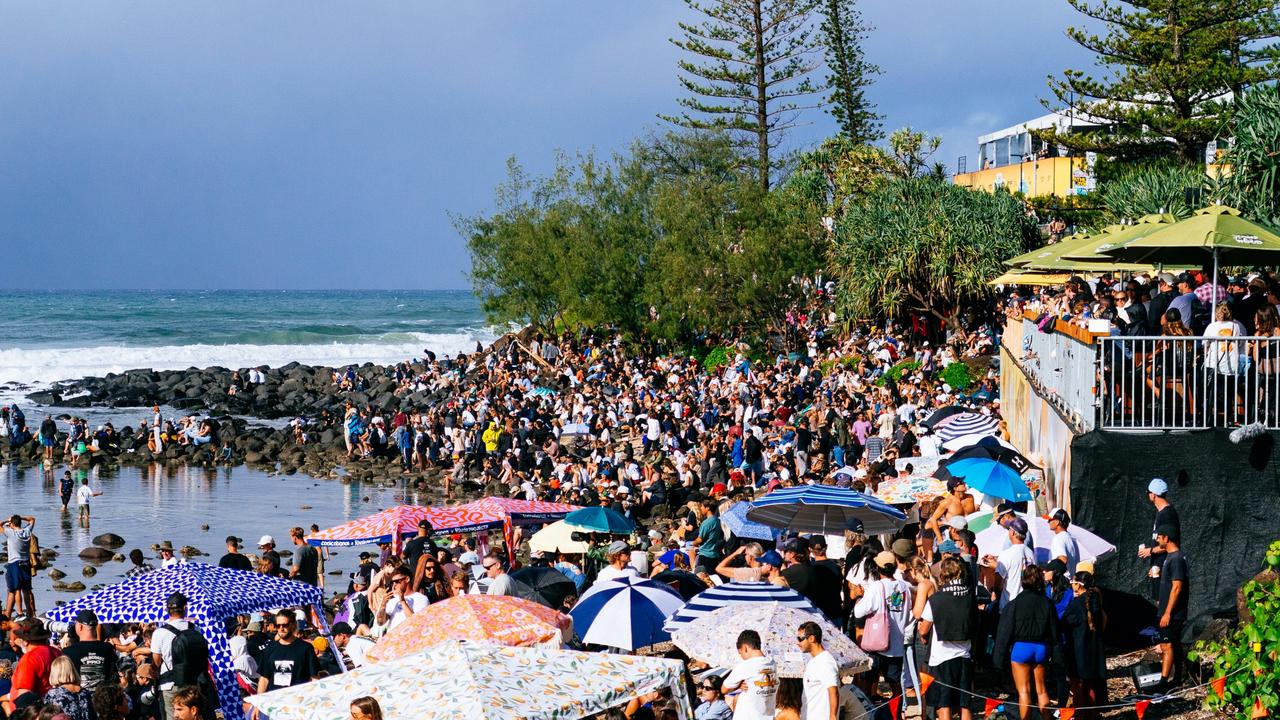The making of the Quiksilver Pro: How times have changed surfing Snapper Rocks
BACK in 1978 the winner of the world surfing championship walked away with a measly $7650 pay packet for 11 gruelling events — now it’s $100k.
Surfing
Don't miss out on the headlines from Surfing. Followed categories will be added to My News.
WHEN Gold Coast surfer Wayne “Rabbit” Bartholomew won the world surfing championship in 1978, he walked away with a measly $7650 pay packet for 11 gruelling events.
At the end of the Quiksilver Pro which begins tomorrow at Snapper Rocks, the men’s winner will walk away with $100,000 from a prize purse of $520,000.
Rabbit, and fellow scruffy surfer Peter “PT” Townend were there at the start and helped drive the sport into the billion dollar global industry it is today.

And the Gold Coast’s perfect point breaks that were there at the start are also still the starting point today, with the World Surfing League even acknowledging Snapper as “the undisputed kick-off within the surfing world”.
In the early years of professional surfing in the 1970s the annual surf pilgrimage around the globe started with the Queensland cyclone season.

After the Gold Coast leg surfers would chase surf competition prizemoney south to Victoria’s Bells Beach and then Sydney’s northern beaches, before heading to California or South Africa, then making it to Hawaii in time for the massive winter swells.
But it was always the Gold Coast that was the star.
“It’s warm and beautiful — the Gold Coast has always been the starting point of the world tour,” said Bartholomew, who was president of the Association of Surfing Professionals from 1999 to 2000.

Because he was there from the beginning, Rabbit said the city’s first world-class event was the Stubbies at Burleigh, organised by surf legend Peter Drouyn, now Westerly Windina, in 1977 and which continued to 1988.
“The Stubbies was just massive,” he said.
Despite the world’s best surfers arriving in town each year for pumping waves, the Gold Coast did not hold another event on the world tour until 1994, when the Billabong Pro, started by Bartholomew in 1992, was added.

“It was epic, there was no waiting period and (the Billabong Pro) hit the bull’s eye with perfect swell every year,” said Rabbit.
“Then we had all the best surfers like Kelly Slater, Rob Machado and Tom Carroll calling for it to be added to the world tour.
“So when I went to Gordon Merchant, who founded Billabong, he said yes, it was as simple as that.”

For nine years the Billabong Pro was mobile and ran at Kirra, Snapper Rocks, Burleigh, Duranbah and even Point Lookout on North Stradbroke Island — without any public address equipment and very few spectators.
Then Billabong, founded on the Gold Coast, walked away as a sponsor in 2000 and rival Quiksilver was ready to step in.

After two years as a world tour qualifying event, the Gold Coast was again added to the world tour in 2002.
“Quiksilver have made a good fist of it and it coincided with the sand bypassing system and the creation of the Superbank,” Bartholomew said.

Since then Gold Coasters have done extremely well at the event, largely held at Snapper Rocks at the top of the sandbar dubbed the Superbank, groomed by sand pumped from the Tweed River.
Since 2002, local world champions Joel Parkinson, Mick Fanning and Stephanie Gilmore have won the event multiple times each, with Coolangatta stalwart Dean Morrison also winning in 2003.

But Bartholomew said he thought the Gold Coast’s event would one day return to Kirra as the fabled point break slowly returned to pre-1990s glory and sand built up following the extension of the rock wall on the point in 2013.
“Kirra is the wave all others are measured by — it is the best wave on the planet,” he said
“When it is back they will go to Kirra — no hesitation.
“I think that it will happen for sure — it will come full cycle.”



